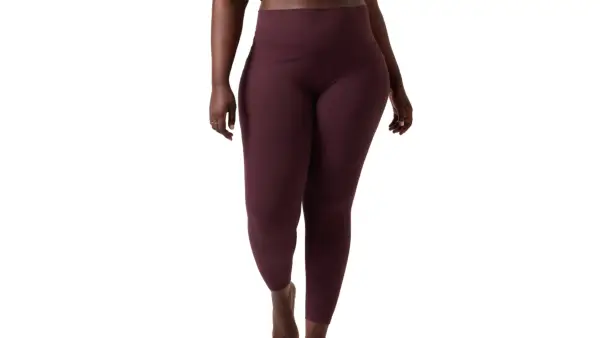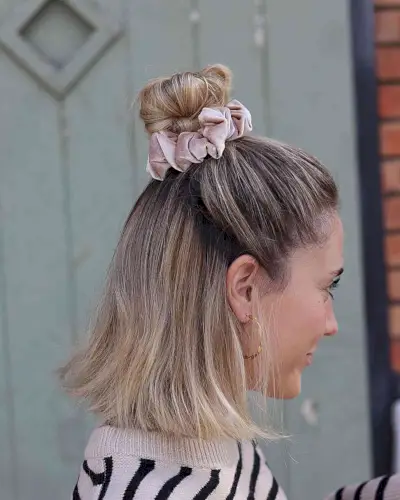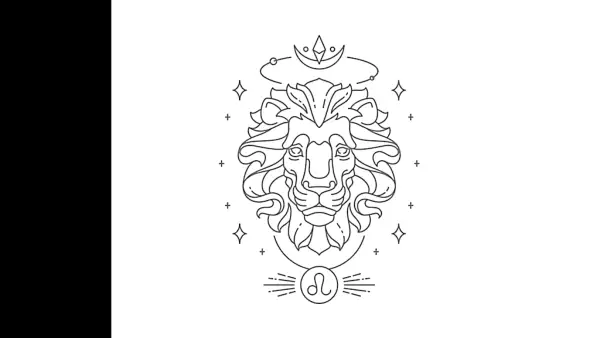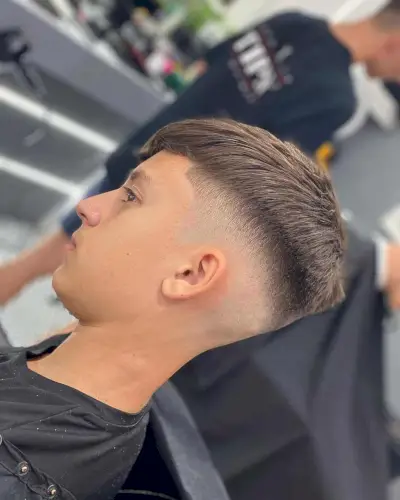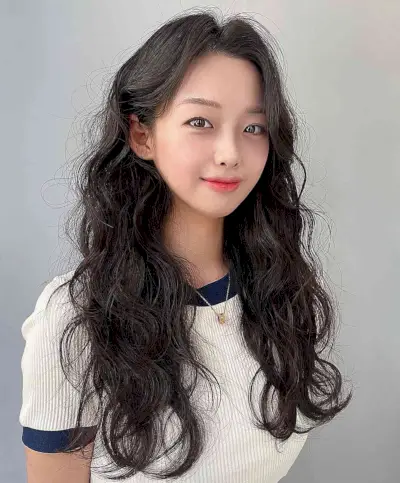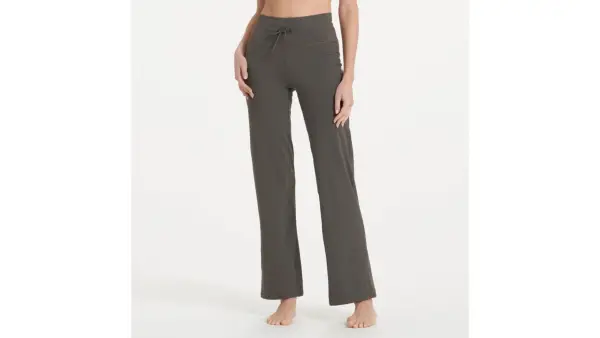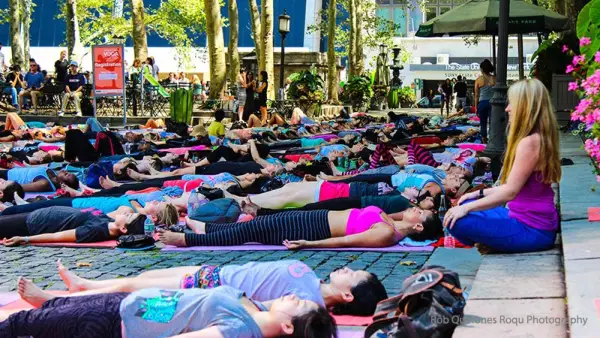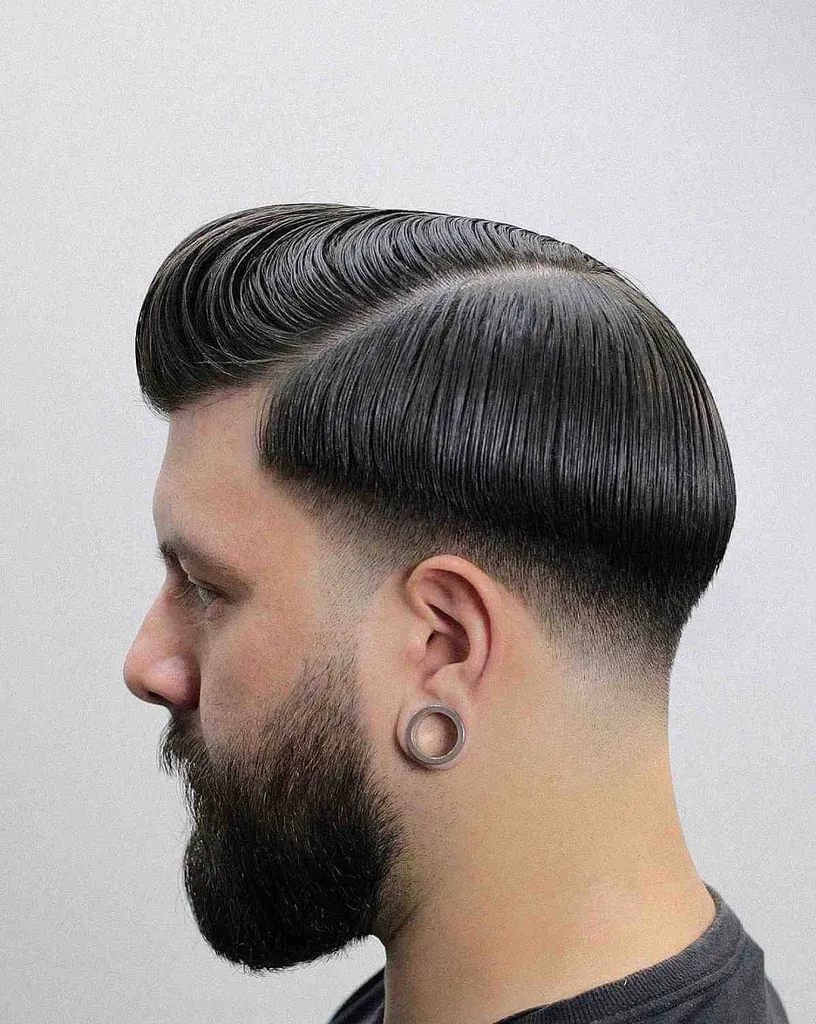I’m sitting on a bright orange yoga mat in Studio 2 at mYoga (pronounced My Yoga) in Hong Kong’s Mongkok district. For the first time in years, I’m nervous as I wait for class to begin. The walls are mirrored; I stick out like a sore thumb—I’m the only Caucasian in the midst of this yoga hotspot for Chinese locals—and the mat situation has got me tweaked. I haven’t used a communal mat since I came home with a plantar wart after a retreat in Costa Rica. But in Hong Kong, the mats are meticulously preset in perfect rows, so I have no choice but to surrender and hope the mats get a thorough cleaning between classes. As the other students chat loudly in Cantonese, I have a mini-internal crisis about which way to sit. Presumably, our teacher will sit on the small platform in the front of the room, but facing it means I’m sitting sideways on my mat. So I turn sideways, then forward, then sideways again like a cat trying to curl up in the right spot. I have a desire to run back to the comfort of my hotel room to do my own practice, but I’m here on a mission: to learn about yoga in Hong Kong. Over the past five years, yoga has been booming in this city. Like the famously frenetic pace and soaring skyscrapers, Hong Kong’s yoga explosion has happened fast and on a huge scale. Ten years ago, just a handful of small studios existed; now, large studio chains offer hundreds of classes per week in Hong Kong and across Asia. MYoga is one of them, and Planet Yoga, Living Yoga, and Pure Yoga are the other big players. Talking to yogis in Hong Kong, I find that the burgeoning yoga scene can be traced back six years to the opening of Pure Yoga. I first heard about Pure a few years back, when Western teachers returned stateside with tales of multistory yoga studios, eager students, and luxurious locker rooms teeming with hot showers (as many as 60 shower stalls in one location!). Then, last year Pure’s subsidiary company, the Asia Yoga Conference, hosted an international yoga conference called Evolution, with 1,500 students taking classes from more than 30 masters who came from India, the United States, and Europe. It was an ideal opportunity to travel to Hong Kong and check things out for myself. During my visit I found the yoga scene in Hong Kong as complex and labyrinthlike as the city itself: It is vast, intense, hot, and at times flashy. I didn’t unravel all of the complexities and inner workings in six short days. But I did glimpse how yoga is evolving in Asia—and the boom started with Pure Yoga.
Reine Wirkung
In den letzten sechs Jahren hat Pure Yoga sechs Studios eröffnet - vier in Hongkong, einen in Singapur und eine in Taipeh. Pure eröffnete im Januar zwei weitere Studios und brachte seine Gesamtsumme auf acht. Dies sind keine winzigen Bungalows mit einem Raum. Das größte reine Studio in Hongkong ist 35.000 Quadratmeter groß, und das größte aller Standorte (in Taiwan) nimmt ein ganzes Gebäude mit neun Stockwerken und 10 Klassenzimmern ein. Und das Unternehmen bleibt unglaublich optimistisch über die Aussichten auf mehr Wachstum. Wir haben gerade erst die Oberfläche von Yoga in Hongkong zerkratzt, sagt Mitbegründer Colin Grant (ein ehemaliger Tennisspieler auf der professionellen Rennstrecke und Eigentümer von Movieland, einem Filmvermietungsunternehmen). Diese Oberfläche umfasst gemeldete 2.000 Schüler, die mehrmals pro Woche zu den 800 Klassen in der Gegend von Hongkong kommen. Pure sagt, dass es innerhalb von drei Jahren nach der Öffnung seiner Türen profitabel war. Zusätzlich zur Evolutionskonferenz bot Pure im vergangenen Jahr eine zweite interne Lehrerausbildung an, und die Liste an Wochenend -Workshops umfasst westliche Meisterlehrer wie John Friend, Richard Freeman und Ana -Forrest. Die meisten westlichen Lehrer sehen die Ironie, Yoga nach Asien zu importieren, als es so nahe kam. Wie Frank Jude Boccio, ein Yogalehrer, der bei Pure unterrichtet hat und der den Buddha Dharma in seine Klassen einbezieht, ausdrückt. Aber Yogalehrer sehen es auch als Gelegenheit. Es gibt so viel Stress und Konkurrenz dort, dass die Menschen nicht viel benötigen, um zu erkennen, dass sie von Yoga profitieren können, sagt Forrest. Ich habe das Gefühl, dass ich einige der ersten Wellen fahre, etwas Exquisites nach Asien zu bringen, und ich fühle mich geehrt.
Schlüssel zum Erfolg
But why did the yoga population suddenly skyrocket when Pure set up shop? Grant is vocal about his passion for yoga and insists that it has done the work of selling itself. However, a small yoga community had been brewing in Hong Kong for years, but without Pure’s impact. The key to Pure’s growth, says Grant, is that he and his partner, Bruce Rockowitz (who owns Li and Fung, a large export and trading company), were businessmen first and yogis second. Unlike the yoga teachers who opened smaller studios in Hong Kong, Grant and Rockowitz had capital and saw yoga as a market. This mirrors the growth of YogaWorks in the United States, which currently has 17 centers in California and New York combined, boasting more than 1,000 classes per week. YogaWorks’ original owners, Chuck Miller and Maty Ezraty, were yoga teachers who kept their business fairly small, with three Los Angeles studios. New ownership with greater business focus turned YogaWorks—like Pure—into a large-scale commercial venture. Longtime friends, Grant and Rockowitz stumbled upon yoga when their wives insisted they take a class during a rained-out golf vacation in the Canadian resort town of Whistler. Grant fell in love with the practice and soon hired his teacher from Whistler, fresh-faced 30-something Patrick Creelman, to be the yoga director of the first Pure studio. We didn’t have a perception of what other studios were like, so we came from a fresh perspective. We thought, ‘What would people like?’ A nice counter when you walk in, a place to change, and a locker. Plus, a towel and a mat, says Grant.
Yoga geht in die Höhe
With that vision, Grant and Rockowitz opened their first studio in Hong Kong’s financial district with all the amenities of an upscale gym—and with that, the course of yoga was forever changed in the city. Whereas yoga in the United States came into the mainstream when it emerged from ’60s counterculture, the practice took off in Hong Kong after it was made palatable for corporate culture. Grant and Rockowitz brought yoga to the fore by making it a centrally located, luxurious treat for busy businesspeople. Along with lockers, showers, and preset mats, the pair crafted a schedule with a steady stream of convenient class times, and, eventually, a lot of variety—classes range from Hot to Ashtanga to Anusara to Yin yoga and meditation. They also seeded the business with attractive, well-qualified teachers starting with Creelman, an Anusara-inspired teacher, and Almen Wong, a well-known former Chinese model and actress who runs the studio’s Hot Yoga program. The first thing I notice when I visit Pure is how the studio interiors differ from the funky little studios scattered about my hometown of San Francisco. At Pure’s studio in the Peninsula Hotel, the design highlight is the stunning view of Hong Kong’s harbor and skyline, while the rest of the lobby is minimalist or, as Grant puts it, not bohemian or gypsylike or quirky. There are no candles, no statues of deities, no inspirational quotes from Rumi taped to the walls. Instead, there are elegant black-and-white leather couches, black tables, as well as an abstract black sculpture. The locker rooms are black, too, with luxurious marble shower stalls. Pure isn’t alone in this design approach. Jean Ward, yoga project manager at mYoga, owned by California Fitness (a subsidiary of 24 Hour Fitness), says they created a neutral space that was more spa than temple. We didn’t want spiritual elements inside. We were very cautious, as we didn’t want to offend anyone. We took the modern approach, with nothing too mystical. Indeed, out of the six studios I visited in Hong Kong, only one had an altar—the Iyengar Yoga Centre of Hong Kong, a one-room studio that was opened in 1999 by Canadian Linda Shevloff. (Had I visited other small studios, I may have found more, but big studios shy away from outward displays of spirituality.) This seemingly small decision—to build a yoga studio with no Ganesh to watch over it and no visible homage to teachers—was noticeable, since a studio’s intimate touch often helps visitors feel as though they’re entering a sacred space. When I walked into mYoga and Pure, they felt a bit sanitized and washed clean of anything too yogic. I also noticed an abundance of mirrors in the classrooms, and I struggled to focus inward. Try as I might, I couldn’t get away from them—even the teachers who turned us away from the mirrors couldn’t prevent the moment when I saw myself out of the corner of my eye in a Chair Twist, and my internal voice shouted in horror, My neck looks like that?! Grant explained that they walk a fine line between being sensitive to their clients’ comfort level and staying true to yoga’s teachings. A lot of the feedback is that people like coming because it’s quite neutral. They don’t feel we’re bombarding them with anything too spiritual or religious. We’re trying to lead, but not by being too far in front…It’s a process, he says. As for the mirrors—in addition to being necessary for the prevalence of Hot Yoga classes in Hong Kong, they’re also a cultural norm, which can be frustrating for the teachers. As Creelman pointed out to me, You see them in every studio, every mall, every restaurant.
Mama und Pop Shops
Große Studios wie Pure und Myoga haben die meisten der kleinen Yoga -Studios, die seit den 1990er Jahren die Nachbarschaften von Hongkongs zentraler, Sheung Wan und Wan Chai gegessen haben, noch verschluckt. Die meisten sind trotz des neuen Wettbewerbs immer noch im Geschäft - aber es war nicht einfach. Shevloff hatte ihre Studentenbasis kaum gebaut, als Pure in der Nähe eröffnete und ihr Studio fast aus dem Geschäft brachte. Es war nur verheerend, sagt sie. Ich habe sicherlich einige Schüler verloren. Ich musste von vorne anfangen. Genau das tat sie, als sie vom zentralen Finanzviertel in das Viertel Sheung Wan gezogen ist, das eher den Einheimischen als an die internationale Geschäftswelt richtet. Heutzutage arbeitet das Studio von Shevloff in einem gesunden Tempo und konzentriert sich weiterhin auf ihre Mission, der kantonesischen Bevölkerung zu helfen, zertifizierte Lehrer im IYengar -System zu werden (schwierig, da Zertifizierungstests in englischer Sprache durchgeführt werden). Seitdem hat sie die Richtung eingegangen, die Yoga in einer Stadt mit mehr als 6 Millionen Einwohnern eingeführt hat. Es war schwer, nicht ärgerlich zu sein, aber gleichzeitig gab es keinen Grund zu sein. Weil es eine so große, lebendige Stadt ist, wird Yoga auf große Weise kommen. Ich sage: Lass es in dieser Stadt Yoga sein, sagt sie. Shevloff ist zuversichtlich, dass es noch Platz für den kleinen Kerl gibt und darauf hinweist, dass es in Hongkong tatsächlich mehr kleine Geschäfte gibt als Megastores. Sie sieht in den letzten Jahren sogar einen Vorteil des großen Wachstums der großen Yoga -Studios: Jetzt wissen so viele Menschen davon, sagt sie. Ich bekomme nie die Frage: Was ist Yoga?.
Zuhause von zu Hause weg
After hearing so much about yoga’s growth in Hong Kong, I was curious to see how it has adapted to a city that bristles with noise, neon, shopping, and stimulation at every turn. So, I headed to mYoga. MYoga has a big locker room, with towels and showers, and a packed class schedule that starts at 7:15 a.m. and ends at 11:30 p.m. The studio has three yoga classrooms, including one room filled with props for equipment yoga classes (a prop-heavy style similar to Iyengar Yoga) and a Pilates room. The basement-level facility isn’t as sleek as Pure’s, but it’s cozier. Before my visit, Ward tells me that this is intentional. People in Hong Kong are looking for a second home. It’s not uncommon to have a whole family living in a 500-square-foot apartment. That’s why the streets are so busy; the restaurants are always busy. People shop, people go out a lot. Now, they hang out here. When I tour the studio, I’m surprised to find that Ward wasn’t exaggerating. The lounge is packed with young people clustered at tables reading magazines, chatting, and tossing back wheatgrass from the juice bar. The Internet stations are busy.
Yoga nach den Zahlen
The studio runs like a well-oiled machine. Flat-screen TVs show yoga video s and class schedules. Turning the corner toward the juice bar, I lose the grime from the street above and begin to take in long drags of the sweet-smelling purified air. Down a long, softly lit hallway sits the locker room desk, where I’m given towels and an opportunity to store valuables in video-monitored lockers. MYoga also offers just a bit of the gym experience in a cordoned-off soundproof area that has spinning classes and an array of group exercise classes (including dance classes called MTV and Bollywood). The place buzzes with energy, and it’s clear that the typical gym protocols—locker key, towels, TV—that feel so foreign to me are completely natural to this clientele. The yoga etiquette, they tell me, is not so familiar. To prevent latecomers, they lock the doors five minutes after class begins. Soon after I decide to sit sideways on my mat, facing the little stage, the teacher—a handsome, wiry young Indian man named Dileep Puiliully—strides into the room wearing loose-fitting black pants and a white T-shirt. There is no ceremony before he begins, no asking about injuries or pregnancy, no exchange of small talk. He simply clips a tiny microphone to his shirt, smiles at the class from behind his mustache, and tells us to stand up. We start by linking simple movement with breath. As we mirror him sweeping his arms overhead, he says in a singsong cadence, In-hay-le. As we sweep our arms back to our sides, he continues, Ahnd ex-hay-le. We repeat this several times to the lilting sound of his voice until he moves on to the standing sequence. Puiliully’s delivery is straightforward and deliberate as he leads us through a sequence of lunge Sun Salutations and simple standing poses. Because there’s a language barrier, he demonstrates many of the poses and doesn’t go into subtle detail. Instead, he counts. As we hold Warrior II to the right, he counts to 10; then to the left, and he counts to 10 again. I begin to feel as though I’m in high school gym class, just waiting for him to get to 10 so that I can move on. I look around, and it seems I am not the only one hanging on every number—but I try to suspend judgment. Later, Puiliully explains that he counts to comfort beginners, so that they know how long each pose will be held.
Interkulturelle Verbindung
Puiliully adds some charm and personality, beginning with a partner pose about halfway through class. He demonstrates it with another student, and then we each find a partner. Mine is a beautiful young Chinese woman with a slight frame. Sensing my hesitation, she holds onto my wrists and prompts me to start the pose by asking, Toes touching? I press my toes against hers, and we straighten our legs into partner Paripurna Navasana (Boat Pose). Her hamstrings are tight and she struggles, so I pull my legs closer to vertical to give her more slack. You are soft, she says quietly. It takes me a moment to realize this tiny woman is not referring to the consistency of my thighs—she’s complimenting my flexibility. In the background I notice Puiliully counting. Nine and a haaalf, he says playfully as the class groans, Aahhhnd ten! As we collectively release our legs to the floor with a thump, the students suddenly laugh loudly and let out a short, exuberant burst of applause. I laugh too, partly out of shock at their unexpected, unselfconscious expression of sheer joy. For the rest of the class, the students giggle as Puiliully plies them with yoga jokes. When they try to balance in Natarajasana, he says, Don’t worry if you wiggle and dance around in this pose. It’s Dancing Shiva Pose! As he demonstrates a pose in which he wraps one leg over his shoulder while seated, they let out a sigh of awe. When he tells them that someday they too will be able to wrap one leg behind themselves and rest their foot on their neck, they look around at each other as if to say, Is this guy for real? This type of show-and-tell demonstration isn’t what I’m accustomed to, but it doesn’t matter—the enthusiasm and sincere interest of the students remind me that yoga doesn’t have to be humorless to work. Before Savasana, Puiliully gathers us in a circle and places a stack of foam blocks in the middle, with a small candle perched on top. You will stare at the candle for as long as you can, he says. Maybe your eyes will even start to water. Then close your eyes, and you’ll see the flame here, he says, pointing to his third eye, the space on his forehead between his eyebrows. Focus all of your attention on that point. I do as I’m instructed and stare at the flame without blinking. My eyes begin to water, but I don’t want to close them. I want to witness the strangers around me. In my periphery I see an older woman with her glasses shining against the flame. I feel the presence of the middle-aged man beside me who had cringed at his tight body all during class. I think about the girl who constantly giggled because it was her first yoga class ever. I feel a surge of happiness. I am completely calm for the first time during my stay in Hong Kong, and I don’t want the moment to end. I no longer feel out of place among a mostly Cantonese-speaking crowd. I feel connected. I feel how—for just a few minutes in a small, mirrored classroom beneath a pulsating melting pot of a city—we are one pulsating vibration of awareness.
Haarschnitte mit Gratschnitt
Indiens Einfluss
I take several classes while I’m in Hong Kong, and my experience is as varied as it would be taking a handful of classes in the United States. Regardless of the studio’s look and feel, the experience depends on the teacher. Grant seems to understand this: It’s nice to have towels and all that, but people will come back if they remember the class. It’s easy to have nice studios, but we have to focus on the programs. And Hong Kong, unlike the United States, has a large population of Indian teachers, whose classes have a decidedly different feel and focus than with Western teachers. The sequencing was more static and less flowing; they used the counting technique as Puiliully had, and many instructed us to shake out our arms and legs (which is thought to relax the muscles and joints and prevent injuries). The classes were fairly similar and thorough in format—all included Pranayama at the beginning and end, and a brief meditation. Instead of talking about philosophical yogic principles, the teachers let the yoga speak for itself. I asked Yogananth Andiappan, an Indian teacher at Pure, about the counting and the lack of overt spiritual or philosophical themes. I don’t believe counting is more like fitness, he answers. In fact, I think playing loud music during class, as some Western instructors do, actually has an adverse effect on the mental and emotional state of the students and makes it more challenging to focus. Yogananth, whose family runs a therapeutic yoga center in Chennai, India, focuses on the practice as a path toward wellness and keeps outward references to spirituality out of the asana room. He points out that yoga was originally taught to the Brahmane , or priestly class; now, it’s accessible to everyone. Some people don’t want to chant mantras. What I teach, everybody can do—asana, pranayama, meditation. Nothing with Krishna or Shiva or anything else. People don’t want to attain enlightenment. They don’t need to walk on water. They just want to be healthy, you know, he says.
Hart arbeiten, hart spielen
The universal thread in the classes I take is the attitude of the students, who are hardworking and boundlessly enthusiastic. People in Hong Kong are very dedicated, says Andiappan. If they tell you they will do this, then they will do it. I have students who practice every day. When I take a beginner’s class one morning at Pure Yoga’s Mongkok location, I learn that most of the students have already practiced that morning. The teacher, Shyam, asks who attended his 8:30 class and a few raise their hands. At first, I think I’ve misheard; but I later learn that in studios all over Hong Kong, people often take more than one class per day—one studio owner boasted that some students take as many as five. At Creelman’s class at the Evolution conference called Hanuman Heart, the enthusiasm is at an all-time high. Creelman, who is affable and self-deprecating and speaks with a drawl that sounds more like he spent his youth surfing Venice Beach than growing up in Canada, begins in classic Anusara style. He sits on the stage and opens up with a little story about himself, which he then relates to the Hanuman theme. The students are serious, and they sit in rapt attention as he talks. When it’s time to chant the Anusara invocation in Sanskrit, they sit tall and belt it out loud and clear. Halfway through the class, Creelman plucks a young Chinese woman from the front row and tells us we’re going to support each other dropping back to Urdhva Dhanurasana (Upward Bow Pose). I panic—is this woman ready to be dropped back in front of all these people? Are the rest of the students, for that matter, ready to head off on their own and assist each other in this deep backbend that could land you on your head? The demo goes off without a hitch, and within seconds I am face-to-face with my partner, an Asian woman named Maryann. I try to figure out whether she is nervous, but she seems calm. I place my hands on her hips, and she peels back with ease. I count to three, and she feels so light that I nearly fling her across the room as I lift her from the backbend up to standing. Now it’s my turn. Backbends are not my strong suit, and they have never felt good without a lot of warm-up, coaxing, and prodding. Suffice it to say that Maryann almost topples over because the force of my backward bend is so strong. Then she lets out a surprised grunt as she pulls my stiff spine back to standing. Before I’ve had a moment to be embarrassed, I turn around and Maryann is back on her mat to practice dropping sich zurück. Ich schaue mich im Raum um und mindestens die Hälfte der anderen jungen Frauen lacht spielerisch, während sie sich anmutig in den Rückbende zurückziehen. Ich hatte so etwas noch nie gesehen und war inspiriert, wie viel Spaß sie zu haben schienen. Die Fähigkeit der Schüler für harte Arbeit und Spaß ist etwas, das ich mit nach Hause nehme. Unabhängig davon, ob anfängend, mittler oder fortgeschritten sind, sind die meisten Schüler lebendig, voll präsent und durstig nach Wissen. Was klar ist, ist, wie neu und das Rühren der Lehren sind - und die Schüler sind hungrig nach mehr. Wie Forrest es ausdrückt, ist ihre Freude berauschend. Mark Whitwell, der auf der Evolutionskonferenz unterrichtet wurde, stimmt zu, dass es den Menschen in Hongkong bisher grundlegend menschliches Verständnis gibt. Wenn diese hellen, nachfragenden Köpfe die Informationen erhalten, die ihnen ansonsten sozial von ihnen zurückgehalten wurden, gehen sie: „Wow! Vielen Dank. “Und der anmutige Fluss des Yoga fließt durch den Raum von Lehrern bis zu Schülern. Das ist es, was ich am Unterrichten überall mag, aber es ist besonders in Asien wahr, weil es ein vergleichsweise neues Phänomen für sie ist.
Andrea Ferretti ist leitender Redakteur bei Stylesway VIP .
